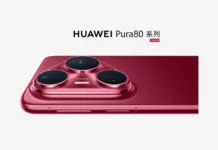Also Read:
Oops Where’s My Mobile Phone?
From Yuppie Gadget to Teen Essential
4 Useful Lighting Apps
| Image is licensed under CC Attribution |
This means that if your app users are the slightest bit bothered by the lack of usability in your app design, they are simply a click away from downloading and using your competition’s apps instead. So here are 9 quick tips to improve your mobile app user experience to increase your sales.
9 Quick Tips to Improve Your Mobile App User Experience
1. Reduce Your App File Size to Save Space
Although the newer smartphones are coming with larger memories to enable users to store more files and applications, every average user also is downloading more and more mobile apps – which makes their devices nearly full all the time. So one of the most important aspects of improving your mobile app user experience is optimizing your app graphics in order to reduce the downloadable file size provided at the end.
2. Include Various Types of Interactivity for a More Interesting User Experience
Nowadays smartphones has come with newer technologies when it comes to more interesting interactivity options. With highly sensitive touchscreen capabilities, voice commands, and advanced multi-touch features, you can create a captivating user experience in your mobile app by including the latest interactivity options. Therefore, your users will enjoy interacting with your app in all sorts of fun and user-friendly ways.
3. Design a Catchy Simple Mobile App Icon
You might have heard the famous saying that “people judge a book by its cover”. Well, your app icon is considered like the book cover, as it is the first impression people develop about your mobile app that makes them decide whether they would like to download and try your app or not. So make sure you design a simple yet catchy design for your app icon.
4. Design a User-Friendly and Easy to Use Interface
With hundreds of related apps waiting to steal your customers’ attention, it is extremely important to develop an easy-to-understand and pleasant user interface for your app. Considering the fact that not all your customers are going to be tech-savvy or simply patient enough to figure out a complex app, your app needs to offer a user-friendly design in order to keep people interested.
5. Avoid Using Too Much Sound within Your App
Although various sound effects make gaming apps and some other types of mobile apps more interesting, keep in mind that some of your users will consider too much sound. Perhaps some users will be using your app in the office, at school, or at home when other people are sleeping. So make sure to keep the sound effects to a minimum level for a better user experience.
6. Use Simple Menus
The nature of mobile apps is different from computer applications, where there might be several menus and plenty of various options available to the user. Since the mobile screen is smaller, it is important to keep the app design simple with fewer menus only when necessary.
7. Provide Easy-to-Understand Error Messages
The more complex your mobile app is, the higher the chances are for users to run into an error message. Whether it is because of entering an invalid data, or simply a bug that occurred in your app, it is essential to provide an easy-to-understand error message for your users to follow conveniently in order to fix the problem. Because nothing is more frustrating that receiving the same error over and over again, without being able to realize how to fix it.
8. Stick to More Graphics and Less Text
Not everyone will be using your app on a large tablet screen. Some of your users might be still using a smaller smartphone, which makes it difficult to read too much text on the tiny screen. So it is recommended to stick to using more graphics rather than text for a better user experience.
9. Clickable Screen Areas should be Large Enough for All Finger Types
Since the latest smartphones come with a touchscreen feature and no real keyboard, the only way your users can interact with your mobile app is by tapping or sliding the screen. So simply make sure the clickable buttons in your app are large enough to conveniently work with smaller and larger finger types.
Beverly C. Stein is a software junkie whose pursuit of tech lead her to the Rippln app, which is now a major source of her income.
 Rizwan Ahmad
Rizwan AhmadThis article is contributed by Beverly C and posted by Rizwan Ahmad Author and founder of cyberockk.com, He is a tech blogger from India and he loves to share his thoughts by writing articles on this site to the different topics related to technology world,








